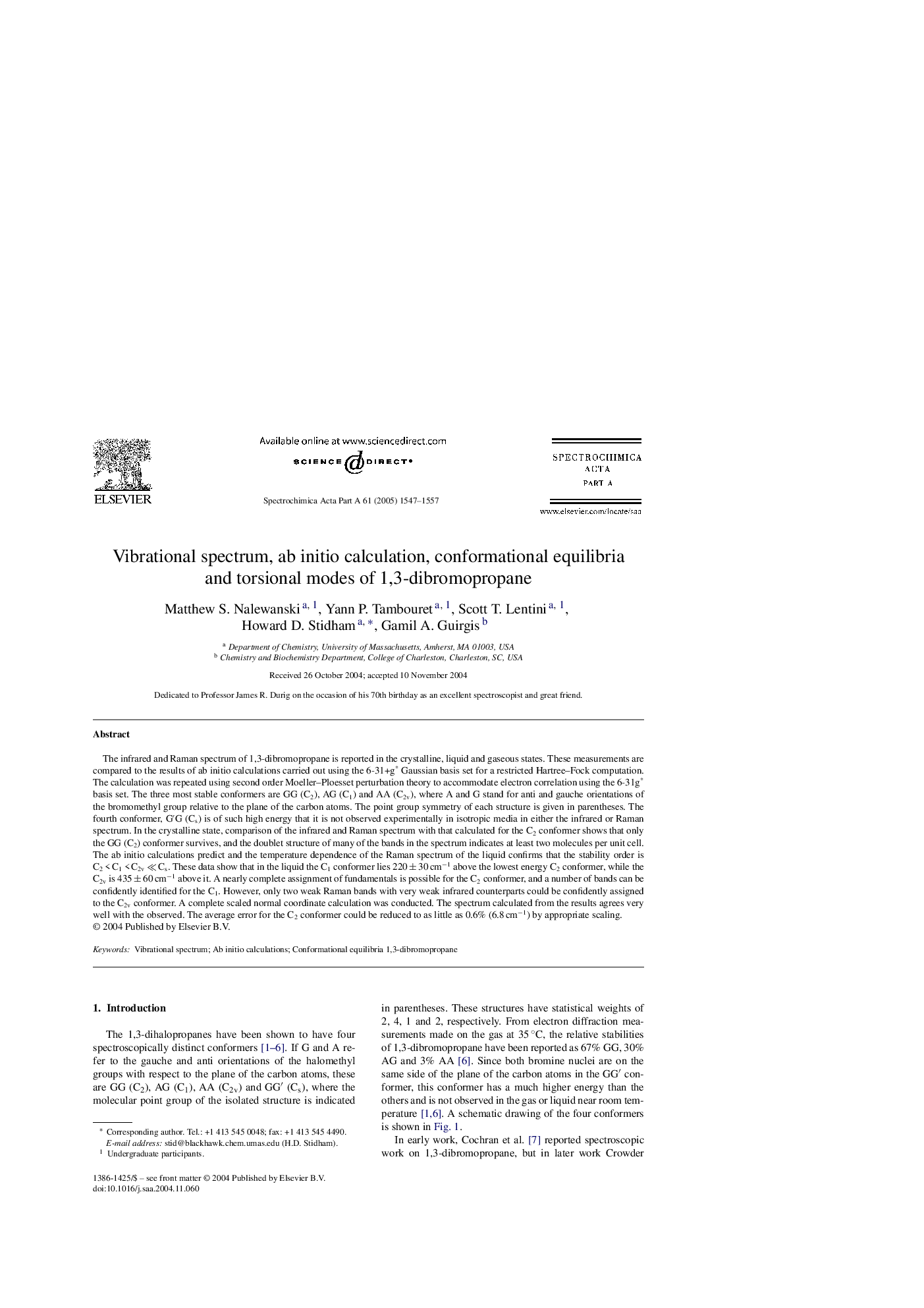| Article ID | Journal | Published Year | Pages | File Type |
|---|---|---|---|---|
| 10558313 | Spectrochimica Acta Part A: Molecular and Biomolecular Spectroscopy | 2005 | 11 Pages |
Abstract
The infrared and Raman spectrum of 1,3-dibromopropane is reported in the crystalline, liquid and gaseous states. These measurements are compared to the results of ab initio calculations carried out using the 6-31+g* Gaussian basis set for a restricted Hartree-Fock computation. The calculation was repeated using second order Moeller-Ploesset perturbation theory to accommodate electron correlation using the 6-31g* basis set. The three most stable conformers are GG (C2), AG (C1) and AA (C2v), where A and G stand for anti and gauche orientations of the bromomethyl group relative to the plane of the carbon atoms. The point group symmetry of each structure is given in parentheses. The fourth conformer, Gâ²G (Cs) is of such high energy that it is not observed experimentally in isotropic media in either the infrared or Raman spectrum. In the crystalline state, comparison of the infrared and Raman spectrum with that calculated for the C2 conformer shows that only the GG (C2) conformer survives, and the doublet structure of many of the bands in the spectrum indicates at least two molecules per unit cell. The ab initio calculations predict and the temperature dependence of the Raman spectrum of the liquid confirms that the stability order is C2 < C1 < C2v âªÂ Cs. These data show that in the liquid the C1 conformer lies 220 ± 30 cmâ1 above the lowest energy C2 conformer, while the C2v is 435 ± 60 cmâ1 above it. A nearly complete assignment of fundamentals is possible for the C2 conformer, and a number of bands can be confidently identified for the C1. However, only two weak Raman bands with very weak infrared counterparts could be confidently assigned to the C2v conformer. A complete scaled normal coordinate calculation was conducted. The spectrum calculated from the results agrees very well with the observed. The average error for the C2 conformer could be reduced to as little as 0.6% (6.8 cmâ1) by appropriate scaling.
Related Topics
Physical Sciences and Engineering
Chemistry
Analytical Chemistry
Authors
Matthew S. Nalewanski, Yann P. Tambouret, Scott T. Lentini, Howard D. Stidham, Gamil A. Guirgis,
